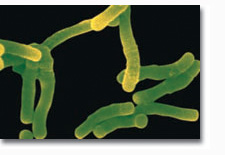 It’s not merely a matter of “the more the merrier” for therapeutic probiotic bacteria.
It’s not merely a matter of “the more the merrier” for therapeutic probiotic bacteria.
Preliminary evidence reported here and here supports the value of the probiotics Bifidobacterium infantis 35624 in treating irritable bowel syndrome (IBS). Now, a study in more than 350 women with IBS reports that the dose of B infantis 35624 has an effect on the ability to improve symptoms.
Continue reading The importance of proper dosing of probiotics →
 Here is an example of a Chinese herbal medicine (dan shen) interacting with a lab test to cause an inaccurate digoxin blood level result.
Here is an example of a Chinese herbal medicine (dan shen) interacting with a lab test to cause an inaccurate digoxin blood level result.
Continue reading The digoxin-dan shen interaction →
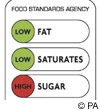 The international trend toward using a simpler “traffic light” nutrient labeling system was discussed here earlier. It tells consumers at a glance if food contains high (red), medium (orange), or low (green) levels of sugar, salt, fat, and saturated fat.
The international trend toward using a simpler “traffic light” nutrient labeling system was discussed here earlier. It tells consumers at a glance if food contains high (red), medium (orange), or low (green) levels of sugar, salt, fat, and saturated fat.
Now, a survey of 200 people in the November issue of the American Journal of Preventive Medicine shows just how much the current system needs to be overhauled.
Continue reading Simplifying nutritional labels →
 This blog has chronicled the lipid-lowering effects of policosanol, which lowers LDL (bad) cholesterol levels by 20% to 30%. Its mechanism of action differs from statins. However, it’s close enough that for safety, I would be cautious taking policosanol and a statin at the same time. One-A-Day Cholesterol Plus contains policosanol.
This blog has chronicled the lipid-lowering effects of policosanol, which lowers LDL (bad) cholesterol levels by 20% to 30%. Its mechanism of action differs from statins. However, it’s close enough that for safety, I would be cautious taking policosanol and a statin at the same time. One-A-Day Cholesterol Plus contains policosanol.
Now, a new study reports that policosanol has a positive effect on recovery in patients with ischemic stroke. This might be an overstatement, but let’s take a closer look.
Continue reading Effects of policosanol in patients with ischemic stroke →
 So many posts on probiotics have been written here that I made it a separate subcategory of entries.
So many posts on probiotics have been written here that I made it a separate subcategory of entries.
Another site for information on probiotics and the intestines can be found here.
GutFlora.org is “a general and independent website for the advancement and dissemination of the knowledge about probiotics.”
Is that specialized enough for ya?
Illustration: Flora
9/29/06 15:28 JR
 A side effect of treatment with antipsychotic drugs is increased weight, which leads many patients to stop taking their medicine. In fact, up to 80% of patients on antipsychotic medication gain a significant amount of weight.
A side effect of treatment with antipsychotic drugs is increased weight, which leads many patients to stop taking their medicine. In fact, up to 80% of patients on antipsychotic medication gain a significant amount of weight.
Now, a study shows that early behavioral intervention prevents much of the weight gain associated with antipsychotic drug therapy.
How’d they do that?
Continue reading Behavioral therapy to reduce weight gain during antipsychotic drug treatment →
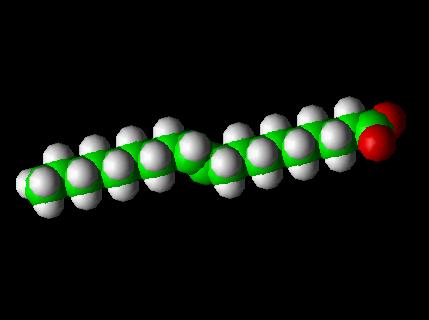 The movement to ban trans fats in restaurants and fast food outlets picked up more support earlier this week. The New York City Board of Health voted to move forward with plans to prohibit the city’s 20,000 restaurants from serving food that contains more than a minute amount of trans fats.
The movement to ban trans fats in restaurants and fast food outlets picked up more support earlier this week. The New York City Board of Health voted to move forward with plans to prohibit the city’s 20,000 restaurants from serving food that contains more than a minute amount of trans fats.
The next steps are a public hearing on October 30th and a final vote in December. The board is authorized to adopt the plan without the consent of any other agency. So, it’s likely that life in NYC will be come a bit healthier by 2007.
You can track back to other related posts starting here.
9/26/06 23:22 JR
 In 2002, the FDA advised consumers of the potential risk of severe liver injury associated with the use of kava-containing (Piper methysticum) dietary supplements.
In 2002, the FDA advised consumers of the potential risk of severe liver injury associated with the use of kava-containing (Piper methysticum) dietary supplements.
In 2003, the U.K.’s medicines regulatory body banned kava when it was linked to a number of deaths and liver damage around the world.
So, where are we today?
Continue reading U.K. concludes kava is not safe →
 A project to better scrutinize and challenge claims made by manufacturers of supplements has been started by the Council for Responsible Nutrition (CRN) and the National Advertising Division of the Council of Better Business Bureaus (NAD).
A project to better scrutinize and challenge claims made by manufacturers of supplements has been started by the Council for Responsible Nutrition (CRN) and the National Advertising Division of the Council of Better Business Bureaus (NAD).
CRN and NAD will “address not only comparative advertising claims among makers of dietary supplements, but also substantive claims that are deceptive or misleading and clearly go beyond what’s supported by research.”
Could be good depending on how they define going “beyond what’s supported by research.”
9/26/06 21:31 JR
 Every time I turn around, another agency is warning its constituents to beware of black cohosh.
Every time I turn around, another agency is warning its constituents to beware of black cohosh.
Japan’s Ministry of Health, Labour and Welfare has now issued a warning to Japanese users of black cohosh. While there are no actual examples of the herb causing health problems in Japan, care should be exercised regarding its intake.
The risk of liver toxicity with black cohosh was reviewed here in an earlier post.
9/26/06 21:08 JR
 Medscape just published an article on the benefits of lowering triglycerides, and the use of omega-3 fatty acids. Read it if you’re so inclined, or if you’re an MD and need the continuing education credits. If not, here’s the take-home info.
Medscape just published an article on the benefits of lowering triglycerides, and the use of omega-3 fatty acids. Read it if you’re so inclined, or if you’re an MD and need the continuing education credits. If not, here’s the take-home info.
Continue reading Issues in lowering triglycerides with omega-3 fatty acids →
 When your leg veins can’t pump enough blood back to your heart, you have chronic venous insufficiency (CVI). Today, standardized horse chestnut seed extract (HCSE) is a well-established treatment for CVI and edema. It’s a common ingredient in lotions, creams, massage oils, and other skin care products, often in combination with other herbal ingredients.
When your leg veins can’t pump enough blood back to your heart, you have chronic venous insufficiency (CVI). Today, standardized horse chestnut seed extract (HCSE) is a well-established treatment for CVI and edema. It’s a common ingredient in lotions, creams, massage oils, and other skin care products, often in combination with other herbal ingredients.
How does it work?
Continue reading Horse chestnuts to treat chronic venous insufficiency →
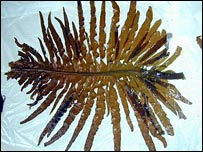 Rat research on fucoxanthin presented during the 2006 American Chemical Society meeting in San Francisco is starting to make the rounds in the media.
Rat research on fucoxanthin presented during the 2006 American Chemical Society meeting in San Francisco is starting to make the rounds in the media.
Don’t hold your breath, fucoxanthin is years from being sold at GNC — if it ever gets that far.
Here’s what we know about fucoxanthin.
Continue reading Fucoxanthin as a potential anti-obesity agent? →
 Feeling tired, overwhelmed, stress out? Maybe more physical contact with the baby is the answer.
Feeling tired, overwhelmed, stress out? Maybe more physical contact with the baby is the answer.
A study of the effects of baby massage on mothers? mood status concluded ?- as we would have guessed — baby massage has a positive effect on the mood status of the mothers.
Continue reading The effect of baby massage on mom’s mood →
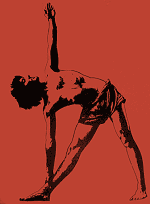 Yoga practice is associated with positive effects on cholesterol levels in the blood.
Yoga practice is associated with positive effects on cholesterol levels in the blood.
For example,
- 6% to 25% decrease in total cholesterol
- 22% to 28% reduction in triglycerides
- 13% to 26.0% reduction in LDL (bad) cholesterol
But how does this compare to the LDL cholesterol lowering effects of statins, the most widely used drugs to treat hypercholesterolemia?
Continue reading Comparing yoga to statins for cholesterol lowering →
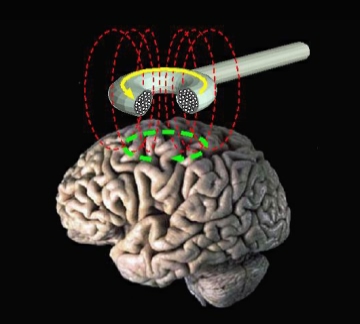 A single session of repetitive transcranial magnetic stimulation (rTMS) to the unaffected part of the brain can improve motor function in stroke patients.
A single session of repetitive transcranial magnetic stimulation (rTMS) to the unaffected part of the brain can improve motor function in stroke patients.
Here are the details of the study.
Continue reading Benefits of repetitive transcranial magnetic stimulation in stroke patients →
 Dr. James Beaulieu, a clinical pharmacist specialist at Rhode Island Hospital in Providence, has published an excellent review of this topic.
Dr. James Beaulieu, a clinical pharmacist specialist at Rhode Island Hospital in Providence, has published an excellent review of this topic.
If you are receiving immunosuppressive treatments and taking or considering taking any herbal medicine, consult this article first.
Immunosuppressive therapy is used for the following reasons.
- Prevent rejection of transplanted organs and tissues (eg, bone marrow, heart, kidney, liver)
- Treat autoimmune diseases or diseases that are most likely of autoimmune origin (eg, rheumatoid arthritis, myasthenia gravis, systemic lupus erythematosus, Crohn’s disease, and ulcerative colitis)
A list and overview of immunosuppressive drugs are available here.
9/24/06 11:18 JR
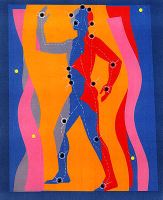 Vasomotor symptoms can be extreme in patients with breast cancer or prostate cancer who are undergoing anticancer therapy. At the Royal Marsden Hospital in the U.K., an audit of 159 patients experiencing an average of 16 flushes per day revealed that self-acupuncture is associated with long-term relief of vasomotor symptoms in cancer patients.
Vasomotor symptoms can be extreme in patients with breast cancer or prostate cancer who are undergoing anticancer therapy. At the Royal Marsden Hospital in the U.K., an audit of 159 patients experiencing an average of 16 flushes per day revealed that self-acupuncture is associated with long-term relief of vasomotor symptoms in cancer patients.
Here’s a summary of the results
Continue reading Self-acupuncture to control hot flushes in patients with breast and prostate cancer →
 Acupuncture is expensive, but self-acupuncture might offer an effective treatment alternative. A retrospective audit of patients in the U.K. with chronic pain who were taught self-acupuncture as a home pain management strategy has been published. Each patient had responded to acupuncture previously and been taught self-acupuncture successfully using three acupuncture points (LI4, ST44, LR3).
Acupuncture is expensive, but self-acupuncture might offer an effective treatment alternative. A retrospective audit of patients in the U.K. with chronic pain who were taught self-acupuncture as a home pain management strategy has been published. Each patient had responded to acupuncture previously and been taught self-acupuncture successfully using three acupuncture points (LI4, ST44, LR3).
Here’s a summary or the results.
Continue reading The long-term value of self-acupuncture for chronic musculoskeletal pain →
 There is a general perception that it is not worth the effort to make changes in diet in order to control hypercholesterolemia. Any changes that occur due to an improved diet are minor compared to what can be accomplished by taking cholesterol-lowering drugs.
There is a general perception that it is not worth the effort to make changes in diet in order to control hypercholesterolemia. Any changes that occur due to an improved diet are minor compared to what can be accomplished by taking cholesterol-lowering drugs.
So, just take the pill(s)!
But that?s not true, and a study from several years ago illustrates the point.
Continue reading The continued importance of diet in managing cholesterol →
Complementary and Alternative Medicine: Fair, Balanced, and to the Point
![]() It’s not merely a matter of “the more the merrier” for therapeutic probiotic bacteria.
It’s not merely a matter of “the more the merrier” for therapeutic probiotic bacteria. Here is an example of a Chinese herbal medicine (dan shen) interacting with a lab test to cause an inaccurate digoxin blood level result.
Here is an example of a Chinese herbal medicine (dan shen) interacting with a lab test to cause an inaccurate digoxin blood level result. The international trend toward using a simpler “traffic light” nutrient labeling system was discussed
The international trend toward using a simpler “traffic light” nutrient labeling system was discussed  This blog has
This blog has  Every time I turn around, another agency is warning its constituents to beware of black cohosh.
Every time I turn around, another agency is warning its constituents to beware of black cohosh. When your leg veins can’t pump enough blood back to your heart, you have chronic venous
When your leg veins can’t pump enough blood back to your heart, you have chronic venous  Feeling tired, overwhelmed, stress out? Maybe more physical contact with the baby is the answer.
Feeling tired, overwhelmed, stress out? Maybe more physical contact with the baby is the answer. Yoga practice is associated with positive
Yoga practice is associated with positive  A single session of repetitive transcranial magnetic stimulation (rTMS) to the unaffected part of the brain can improve motor function in stroke patients.
A single session of repetitive transcranial magnetic stimulation (rTMS) to the unaffected part of the brain can improve motor function in stroke patients. Dr. James Beaulieu, a clinical pharmacist specialist at Rhode Island Hospital in Providence, has published an excellent
Dr. James Beaulieu, a clinical pharmacist specialist at Rhode Island Hospital in Providence, has published an excellent  Vasomotor symptoms can be extreme in patients with breast cancer or prostate cancer who are undergoing anticancer therapy. At the Royal Marsden Hospital in the U.K., an audit of 159 patients experiencing an average of 16 flushes per day
Vasomotor symptoms can be extreme in patients with breast cancer or prostate cancer who are undergoing anticancer therapy. At the Royal Marsden Hospital in the U.K., an audit of 159 patients experiencing an average of 16 flushes per day  There is a general perception that it is not worth the effort to make changes in diet in order to control hypercholesterolemia. Any changes that occur due to an improved diet are minor compared to what can be accomplished by taking cholesterol-lowering drugs.
There is a general perception that it is not worth the effort to make changes in diet in order to control hypercholesterolemia. Any changes that occur due to an improved diet are minor compared to what can be accomplished by taking cholesterol-lowering drugs.